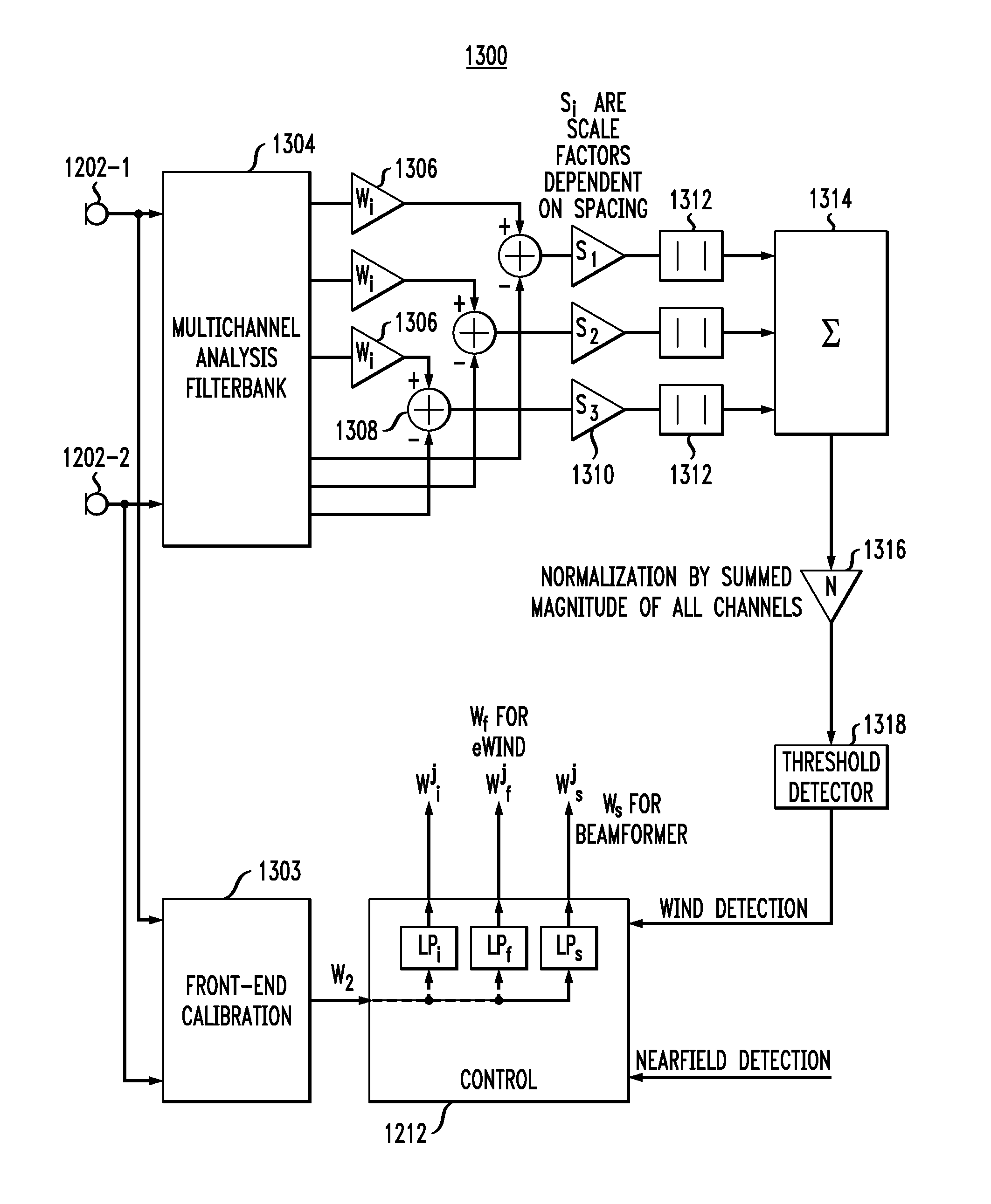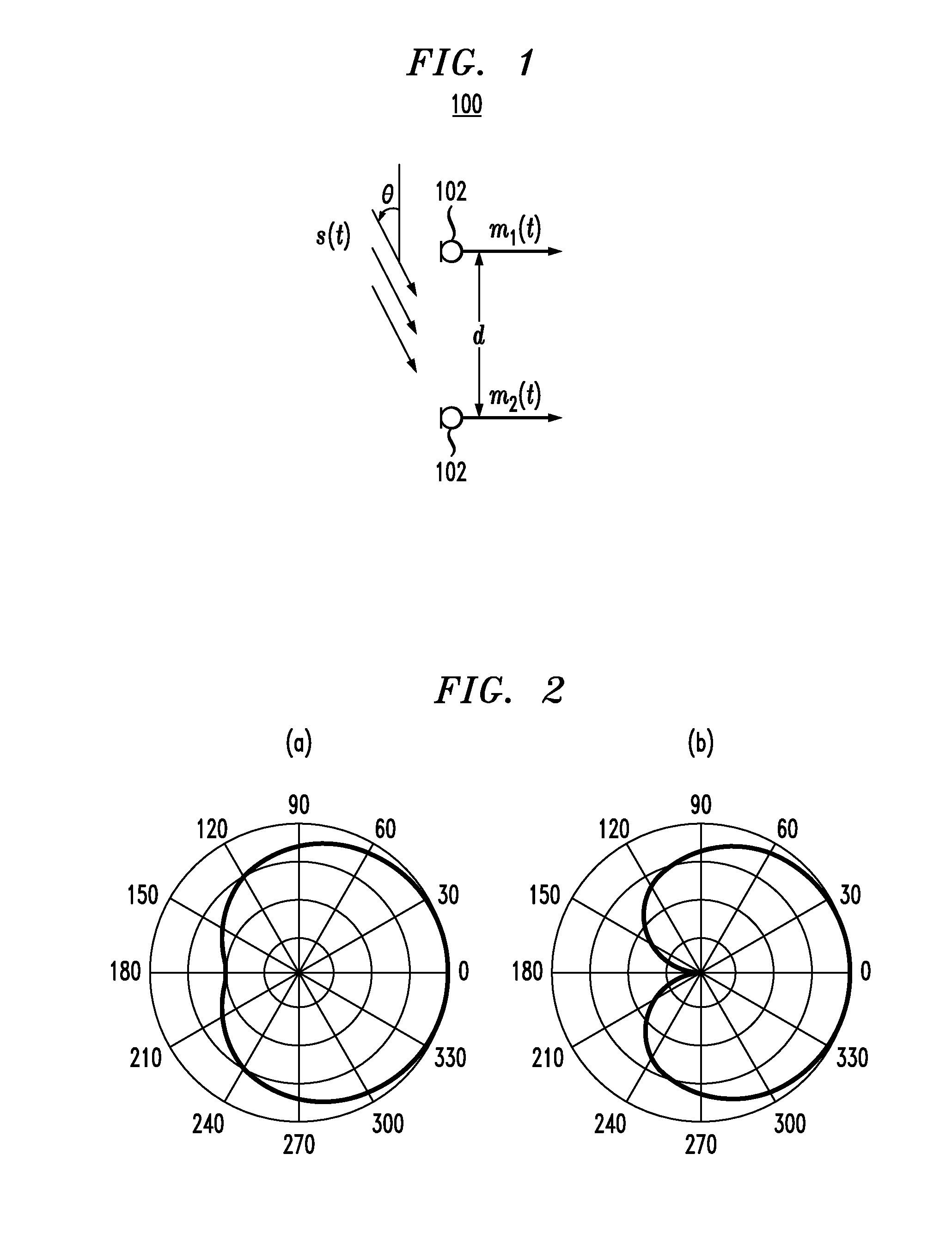Noise-reducing directional microphone array
a microphone array and noise reduction technology, applied in the field of acoustics, can solve the problems of limiting communication quality, wind noise is now becoming a major issue for users of directional hearing aids, and the sensitivity of microphones has been a major problem, so as to achieve the effect of increasing the amount of wind noise suppression and increasing the wind noise condition
- Summary
- Abstract
- Description
- Claims
- Application Information
AI Technical Summary
Benefits of technology
Problems solved by technology
Method used
Image
Examples
Embodiment Construction
Differential Microphone Arrays
[0033]A differential microphone is a microphone that responds to spatial differentials of a scalar acoustic pressure field. The order of the differential components that the microphone responds to denotes the order of the microphone. Thus, a microphone that responds to both the acoustic pressure and the first-order difference of the pressure is denoted as a first-order differential microphone. One requisite for a microphone to respond to the spatial pressure differential is the implicit constraint that the microphone size is smaller than the acoustic wavelength. Differential microphone arrays can be seen directly analogous to finite-difference estimators of continuous spatial field derivatives along the direction of the microphone elements. Differential microphones also share strong similarities to superdirectional arrays used in electromagnetic antenna design. The well-known problems with implementation of superdirectional arrays are the same as those ...
PUM
 Login to View More
Login to View More Abstract
Description
Claims
Application Information
 Login to View More
Login to View More - R&D
- Intellectual Property
- Life Sciences
- Materials
- Tech Scout
- Unparalleled Data Quality
- Higher Quality Content
- 60% Fewer Hallucinations
Browse by: Latest US Patents, China's latest patents, Technical Efficacy Thesaurus, Application Domain, Technology Topic, Popular Technical Reports.
© 2025 PatSnap. All rights reserved.Legal|Privacy policy|Modern Slavery Act Transparency Statement|Sitemap|About US| Contact US: help@patsnap.com



